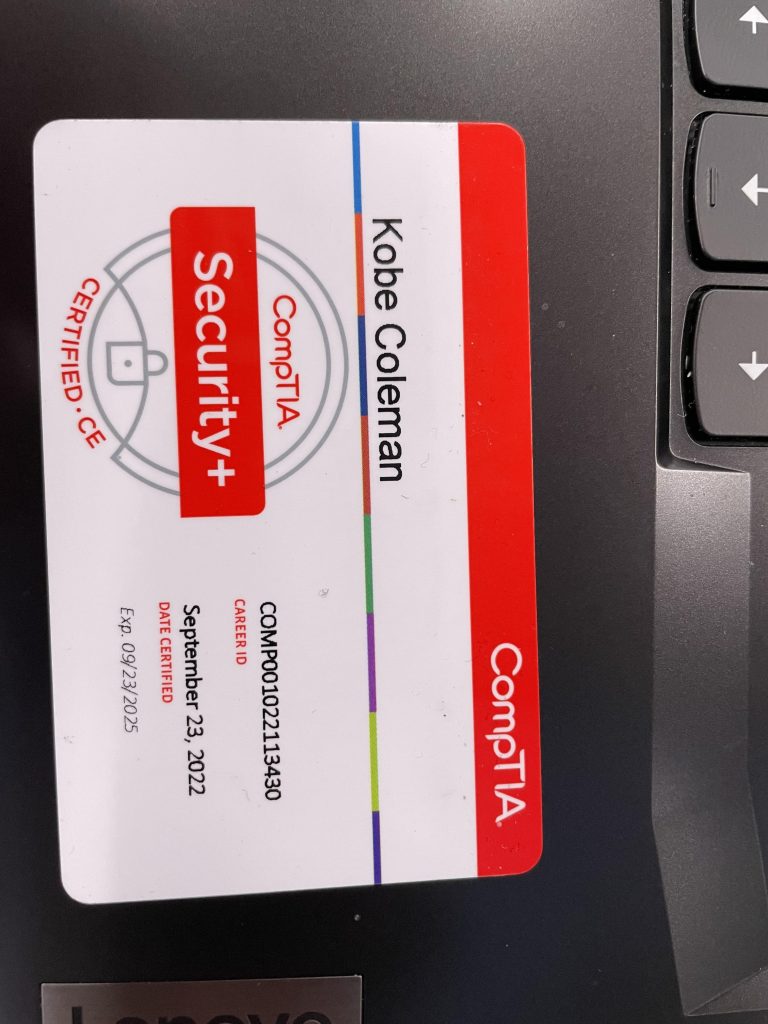Technical Skills
Artifact 1: Password Cracking: Password cracking is a technical skill that requires an understanding of encryption methods, password storage systems, and the use of specialized tools to test the strength of passwords. It involves critical thinking, problem-solving, and knowledge of attack techniques, such as brute force and dictionary attacks. Learning password cracking helps identify vulnerabilities and shows the ability to apply technical methods to strengthen system security.
Assignment-5-Password-Cracking-Part-AArtifact 2: Wireshark – Using Wireshark is a technical skill because it involves capturing and analyzing network traffic at a deep level. It requires an understanding of networking protocols, packet structures, and the movement of data across networks. Being able to filter, inspect, and interpret packet information takes both technical knowledge and attention to detail. Mastering Wireshark shows the ability to troubleshoot network problems and detect suspicious activity.
IT-HW7Artifact 3: Network Diagram: Creating a network diagram is a technical skill because it requires mapping out how devices, servers, and systems connect and interact within a network. It involves understanding networking concepts like IP addressing, routing, and security zones. Building an accurate diagram takes planning, precision, and technical knowledge about how networks function. It also facilitates troubleshooting, design, and communication among IT teams.
IT-HW-2Communications
Artifact 1: Assessment:
Assessing-the-Effectiveness-of-the-FedRAMP-Cybersecurity-PolicyArtifact 2: Floor Plan:
Midterm-Paper-407Artifact 3: Report for Customer:
Final-407Dedication to Continuous Learning
Artifact 1: Security+ +: Obtaining the Security+ certification shows dedication to building a strong foundation in cybersecurity. It covers crucial areas such as network security, risk management, and threat analysis, which require careful study and thorough understanding. Preparing for Security+ often involves balancing theoretical knowledge with real-world scenarios, demonstrating a disciplined approach to acquiring essential skills. Earning this certification highlights a commitment to growing as a knowledgeable and dependable cybersecurity professional.

Artifact 2: CEH: Earning the CEH certification shows strong dedication to learning because it requires understanding complex cybersecurity concepts, hacking techniques, and defense strategies. Preparing for CEH means spending hours studying ethical hacking tools, attack methods, and countermeasures. It also involves practicing hands-on labs to build real-world skills. Completing this certification demonstrates a serious commitment to mastering technical knowledge and staying current in the rapidly evolving field of cybersecurity.

Artifact 3 AWS CCP: Achieving the AWS Certified Cloud Practitioner certification reflects dedication to learning about cloud technology, a significant part of today’s IT world. It requires understanding core AWS services, cloud security basics, and best practices for cloud design. Preparing for this exam demonstrates a willingness to step outside traditional IT skills and learn new concepts essential for modern technology careers. Passing the AWS CCP proves a commitment to continuous learning and adapting to the latest trends.
AWS-Certified-Cloud-Practitioner-certificate